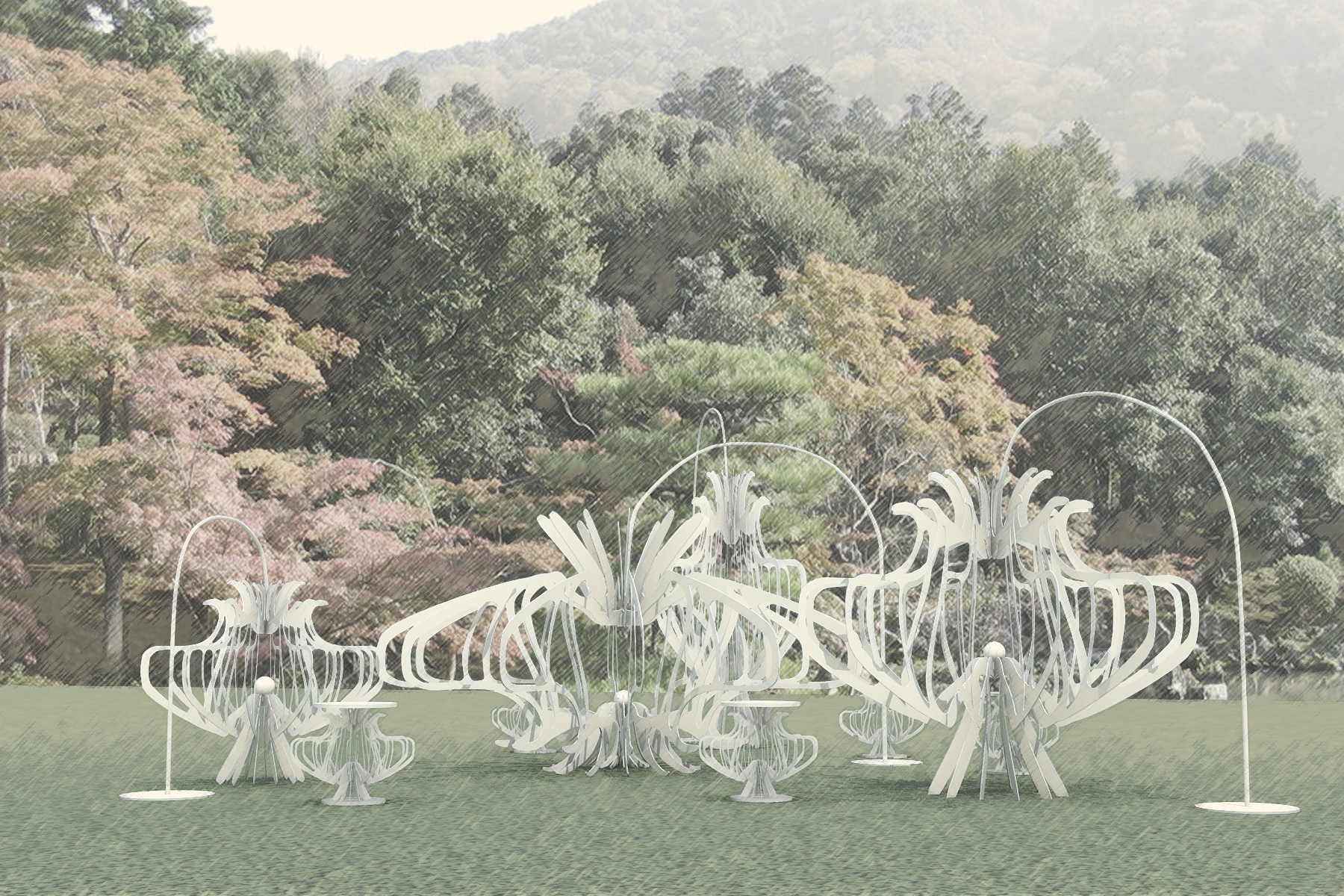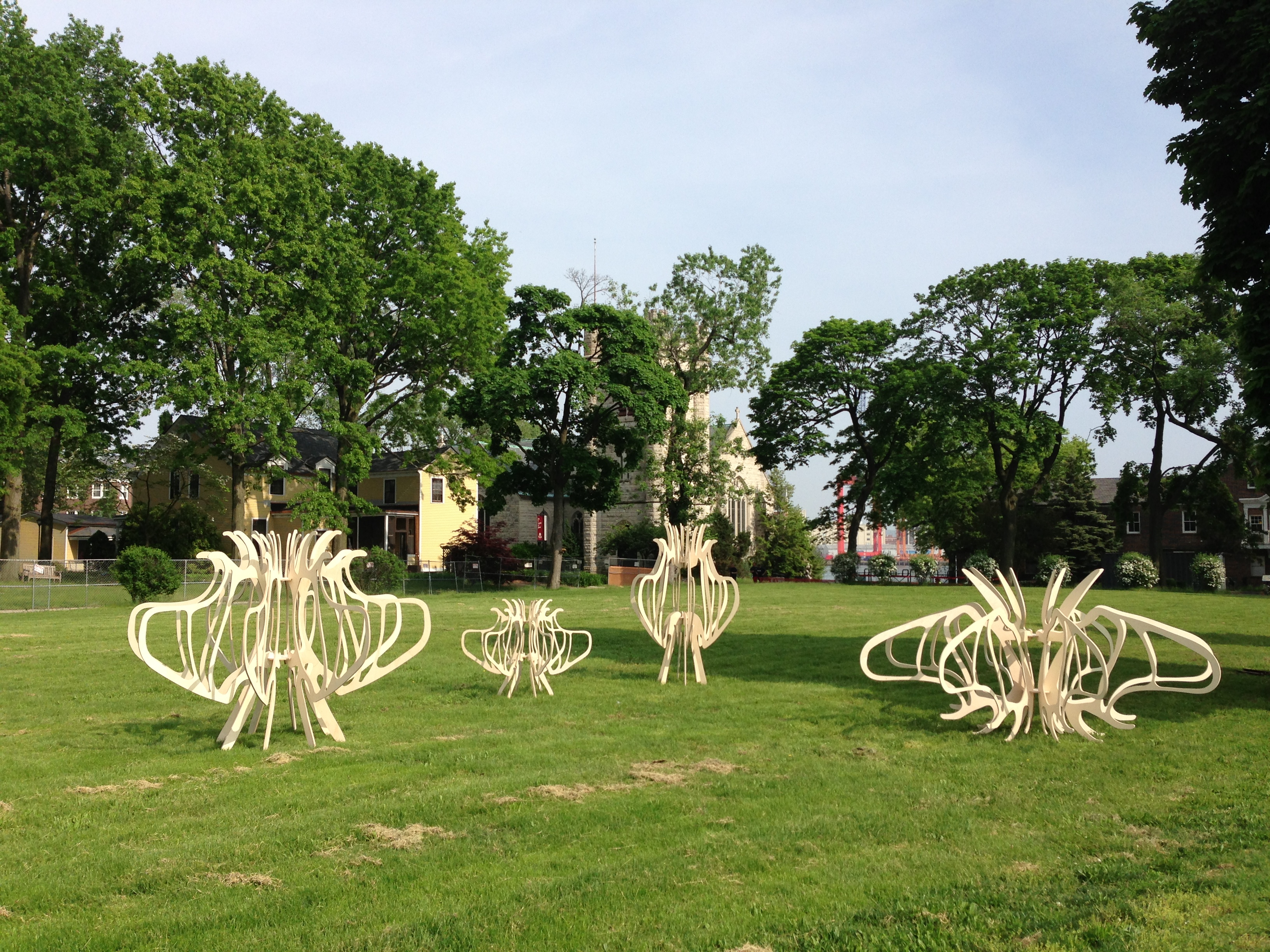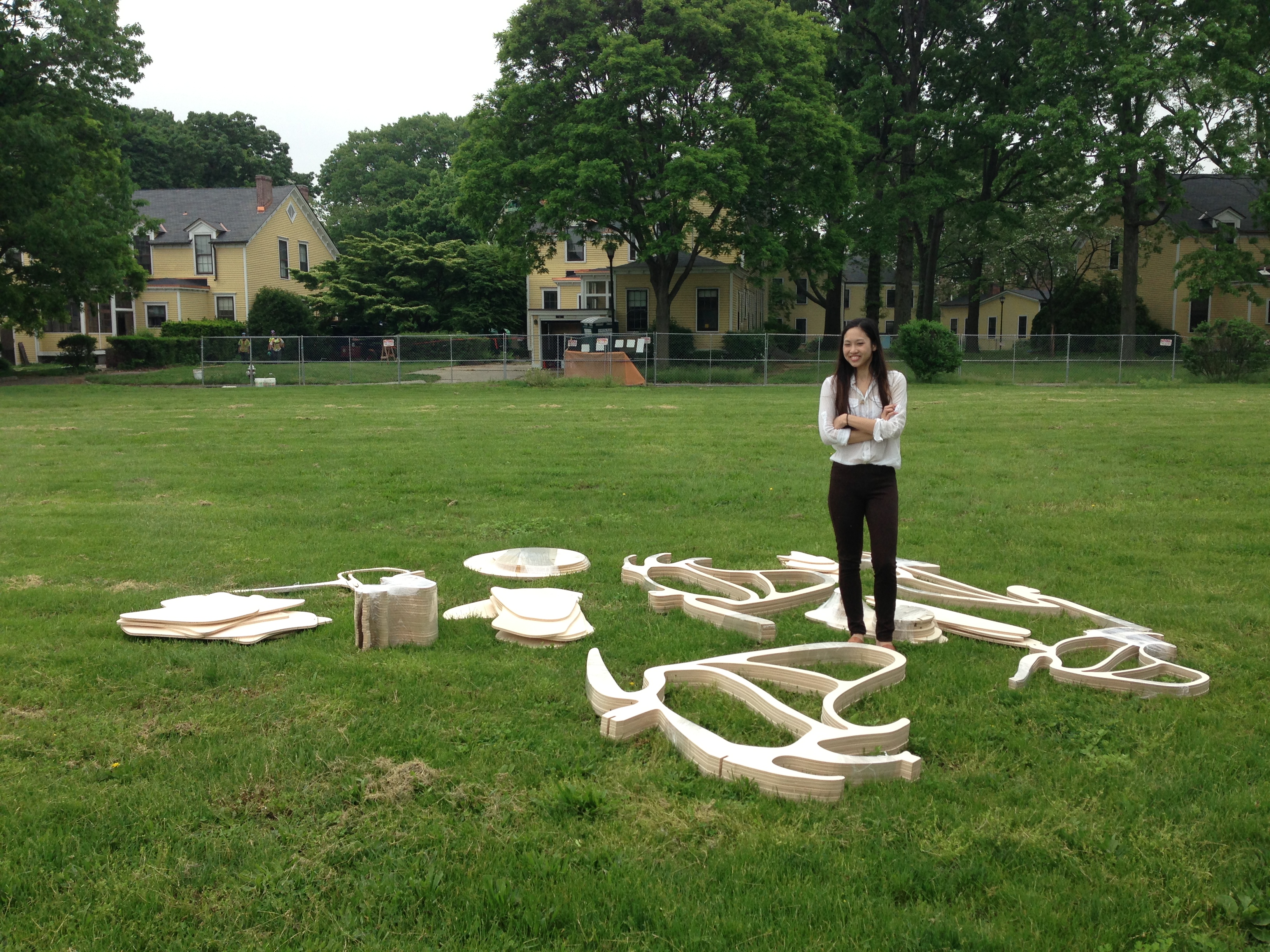An Interview With Anantapa Thongtawach (MFA DT), Showing at FIGMENT
Anantapa Thongtawach is going into her second year in Parson’s Design and Technology MFA Program, and she has proven herself to be one of the program’s rising stars! Thongtawach’s beautiful sculptures will be showcased on the main lawn at FIGMENT, a free, collaborative, non-profit arts event happening June 8th and 9th on Governors Island, NYC.
Thongtawach also runs a small design studio called Play Plain Design, and her research as a designer in NYC revolves around “making interactive architectural elements and installations (both hardware and software) that promote the enhancement of design value and human experience.” Find out more about this talented artist below.
AMT: Congratulations on getting your work onto the main lawn at FIGMENT! How did this achievement come about?
Anatapa Thongtawach: Last year during my final presentation for my Physical Computing class, my professor, Yuri Gitman, invited one of his really good friends, Mr. Ron Dubren, to be our guest critic. Ron was very interested in my design, and he introduced me to FIGMENT. I sent them my proposal for “The Fallen Pendants,” and was thrilled to hear back that my work had been selected to join the works of thirteen other artists for FIGMENT 2013.
AMT: Tell us something about the conception and vision of your pieces. Were they created specifically for the lawn, and why did you feel this work was best shown in this particular space?
Anatapa Thongtawach: The Fallen Pendants are designed to be sculptures of hope. The main concept of interaction came from the Japanese Tanabata festival, which is also known as the star festival. Japanese people generally celebrate by writing wishes, sometimes in the form of poetry, on small pieces of paper they then hang on bamboo. In this sense, I want to bring stars down to the garden. The look-alike floor lamps conceptualize the fallen stars in a way that most people can relate to. Heavy-looking pendants, bent down touching the ground, create a new feeling of spirituality in the space. The locations of the star sculptures were set to reflect certain constellations, making the space referential of astrology and the zodiac. The fairytale-like, falling star sculptures give a sense of wonder to the viewer. Visitors will be writing wishes on small pieces of white paper and tying them to the stars’ structure–in a sense “wishing upon the stars.” As time passes and more wishes are added, I hope to see the sculpture grow into a monument of hope created by its visitors.
AMT: Where are you from originally? Does your homeland contribute to your practice?
AT: I’m originally from Bangkok, Thailand. Having a passion for both architecture and design, I received my Bachelor of Architecture in Interior Architecture from Chulalongkorn University in Bangkok, Thailand. Upon graduation, I worked for an architectural company as an architect. I love to travel, and experiencing the diversity of cultures often becomes the inspiration for my designs, as you can clearly see from The Fallen Pendants.
AMT: Has your art changed since being exposed to the New York art world?
AT: It has always been my dream to come to New York. I don’t think my art has changed, but I think it has adapted and developed through learning about new technology and how to integrate that into creating parametric designs.
AMT: What stands out for you as a key strength that you have developed in your time at Parsons, and what factors contributed to that?
AT: Design and Technology is a wonderful program–something so new and different that I could never find in my country. Before coming here, I knew nothing about code, and now that I’ve learned a little bit about it, my horizons have expanded further than I could have ever imagined. Now there’s no limitation to what I can do. I have learned that being a designer is something more than just making beautiful things. Parsons has taught me to think, not only about what is beautiful, but what is meaningful. I have already learned more than I thought was possible from my classmates and professors, and every day I’m excited to go to school and learn more.
AMT: How do you feel Parsons differs from other schools? Why did you choose Parsons for your graduate education, and how did you choose the DT program in particular?
AT: I actually chose the program before the school. As an architect, I always wanted to embed technology into my designs. When I first came here, I wanted to do interactive architecture, but now I’ve found so many things out there that I want to do. DT is like a candy store. All the materials are given, it’s so much and all great. You want to take it all but you can’t. Another thing that is so great about DT is its diversity. You get to meet people from very different professions, all trying to use technology to improve where we came from. It’s a very fascinating community.
AMT: Would you say that the DT program has influenced and helped your work mature?
AT: Absolutely. DT has opened up so many opportunities, and offers every resource possible. But I have to say, you have to look for the opportunities.
AMT: Is there anything you’d like to tell an incoming student that you wish you had known when you got to Parsons?
AT: Be openminded and don’t wait. If you want something, go look for it.
AMT: How do you think the role of the artist in today’s world has changed, and what do you feel you are bringing to the table?
AT: I came from a place where no one cares about art to New York where everything is art. It’s so different. Somehow I think artists became designers. The line is fading. As for me, I have always had significant interest in forms that are aesthetically appealing and functional, as well as forms that use technology to help create innovative interactive architecture and explore the possibility of using that capability to answer the question: what would be the fittest design for modern society.
AMT: What has been your overall favorite course/project since you’ve been here at Parsons?
AT: I love Physical Computing. Arduino turns people like me, who know nothing about technology in general, into a programmer. Giving this power out to the public is powerful and will soon change the world around us.
AMT: Where do you see your practice taking you? What do you hope lies ahead after Parsons?
AT: I will always be a designer. I don’t know if it will be in product design, interior design, architecture or digital design, but I definitely want to integrate technology into anything I do, taking my designs to another level.
AMT: Thanks Anantapa. We’re excited to see what comes next!



